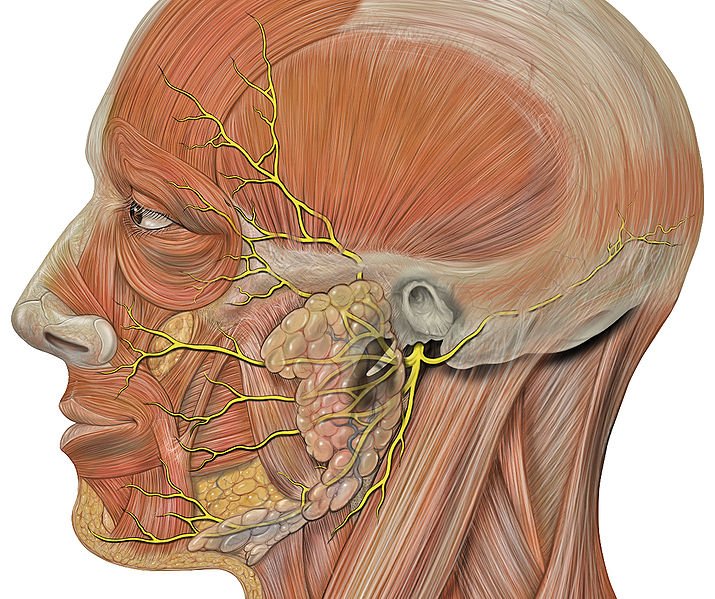A significant proportion of the population sneezes on a sunny day after leaving a room with medium-light intensity. It is called Autosomal dominant Compelling Helio-Ophthalmic Outburst syndrome (ACHOO syndrome). There is also a simpler name: photic sneezing syndrome (PSS). The reason is not only the sun but also any other light source. Usually, the series of sneezes is 3-4, but sometimes sneezing stops only after 40 sneezes.
FREQUENCY
It is estimated that approximately 11-35% of the population is affected by this disorder. The discrepancy is quite large because the phenomenon has not been subjected to extensive population studies. For example, in a survey on the “Mózgowiec” profile on Instagram, 57% of respondents said they sneeze in the sun. A total of about 130 people responded. There is also a difference in the prevalence between different races. The observation shows that representatives of the white race are affected by ACHOO syndrome at a level of about 23-38%, while when it came to the black race it was very rare, affecting about 2-8% of people.
CAUSES
It is known to be an inherited trait, although it is uncertain whether it can be acquired. The first theory is supported by the fact that it also occurs in infants. The specific gene responsible for this syndrome has not been found. It is an autosomal dominant trait. This means that if either parent manifests the trait, they will pass it on to their child with a 50% probability, regardless of gender.
MECHANISM
The mechanism of uncontrolled sneezing due to changes in light intensity is not well understood. It is presumed that the wavelength (and therefore the color of the light) does not matter. The mechanisms outlined below are not necessarily mutually exclusive. It is possible that they exist in parallel, one depends on the other, or they are coupled.
OPTIC-TRIGEMINAL SUMMATION
According to one of the more accurate theories of so-called optic-trigeminal summation, during overstimulation of the optic nerve, the nerve impulse from it is interpreted as coming from a branch of the trigeminal nerve receiving signals from the nasal mucosa. In response, a message is sent to the nasal mucosal nerve branch to sneeze. As you can see in the illustration below, the trigeminal nerve receives signals from a fairly large area of the front of the skull. However, all nerve impulses must pass through the trigeminal ganglion, a branch of the trigeminal nerve, before being delivered to the appropriate center. Hence, in all this tangle of nerves, confusion can occur, especially if a sloppy connection was made during their developmental stage.

Source: Patrick J. Lynch, Medical Illustrator, CC BY 2.5 https://creativecommons.org/licenses/by/2.5, via Wikimedia Commons, no changes have been made to the illustration.
PARASYMPATHETIC GENERALIZATION
Somewhat similar in the premise is the theory based on the parasympathetic generalization scheme. Note that the illustration above shows only a diagram of the trigeminal nerve. The main branches branch out into smaller and smaller branches. When nerve fibers from one branch of the trigeminal nerve respond to stimuli, adjacent nerve fibers from another branch may be activated. When this happens, sensory stimuli from the eyes will reach neurons in the cerebral cortex and also stimulate neighboring neurons, which will trigger the sneeze reflex in parallel with pupil constriction.
STIMULATION OF THE VISUAL CORTEX
The center responsible for maintaining basic life functions is the brainstem. Its basic tasks include, for example, regulation of breathing, heart rate, and sneezing. With ordinary sneezing, cortical circuits are not so important. However, studies using electroencephalography (EEG) indicate that the visual cortex is over-stimulated in response to visual stimulation during this phenomenon. This means that not only brainstem circuits but also cortical circuits are responsible for the photic sneeze reflex. This is why both theories are equally plausible. However, they differ in where the abnormality occurs.
MELANOPSIN
Increased sensitivity to light may be related to the action of melanopsin. This is a pigment found in the retina. It is responsible for registering changes in radiant intensity and regulates non-visual responses to light (e.g., pupil constriction reflex). It would follow that it is involved in the measurement of light radiation, receiving photons of light for purposes other than image formation. Therefore, one may venture to say that the photic sneeze reflex may occur even in some blind people as a result of the reception of signals received by melanopsin in the light-sensitive ganglion cells of the retina.
DANGER OF SNEEZING
DRIVING
Since we involuntarily close our eyes when sneezing, it poses a great danger to drivers when exiting a dark tunnel. Similarly, pilots of civilian and military aircraft with this affliction can have problems in the event of a sneezing fit. It goes without explaining how important it is in each of these cases to be in full control of the machine you are driving.

TREATMENTS
Visiting the dentist can be a traumatic experience. Sneezing due to exposure to the high-intensity light of a dental lamp is an additional risk. The same is true for many surgical procedures or during recovery from general anesthesia. Sometimes increased intracranial, intraocular, intra-thoracic, or abdominal pressure should be avoided. Appropriate adaptation of the recovery room and patient interview about uncontrolled sneezing prove essential.
TRANSMISSION OF DISEASES
Sneezing increases the risk of transmitting infectious diseases. Therefore, I encourage you to sneeze empathetically. I mean to cover your mouth and nose – preferably with a tissue, if you don’t have one – sneeze into your elbow, eventually cover yourself with your hand (better the left one if the right one is used to greet you).
RECOMMENDATIONS
It is recommended that you wear a hat or sunglasses to protect your eyes from direct sunlight whenever possible.
NEGLECTED RESEARCH
It might seem that research on photic sneezing is not the most important. This phenomenon is usually treated as a curiosity. Nothing more misleading. In some people sneezing to light occurs together with photophobia. This is supposed to happen because of the increased sensitivity to light due to direct stimulation of the optic nerve (similar to, for example, when plucking eyebrows). One Japanese study suggests that the photic sneeze reflex increases the risk of migraine and higher psychological stress. Therefore, further research may lead to an understanding of the common mechanism underlying these phenomena. The answer is believed to lie in changes in the parasympathetic and trigeminal nervous systems that are involved in the photic sneeze syndrome.
Become a Patron!Sources:
- Peroutka SJ, Peroutka LA. Autosomal dominant transmission of the “photic sneeze reflex”. N Engl J Med. 1984 Mar 1;310(9):599-600. PMID: 6694722.
- García-Moreno JM, Páramo MD, Cid MC, Navarro G, Gamero MA, Lucas M, Izquierdo G. Síndrome de estornudos heliooftálmicos compulsivos autosómico dominante (reflejo fótico de estornudo). Estudio clínico de seis familias españolas [Autosomal dominant compelling helio-ophthalmic outburst syndrome (photic sneeze reflex). Clinical study of six Spanish families]. Neurologia. 2005 Jul-Aug;20(6):276-82. Spanish. PMID: 16007510.
- Langer, Nicolas & Beeli, Gian & Jäncke, Lutz. (2010). When the Sun Prickles Your Nose: An EEG Study Identifying Neural Bases of Photic Sneezing. PloS one. 5. e9208. https://doi.org/10.1371/journal.pone.0009208.
- Breitenbach RA, Swisher PK, Kim MK, Patel BS. The photic sneeze reflex as a risk factor to combat pilots. Mil Med. 1993 Dec;158(12):806-9. PMID: 8108024.
- Benbow E. W. (1991). Practical hazards of photic sneezing. The British journal of ophthalmology, 75(7), 447. https://doi.org/10.1136/bjo.75.7.447-a
- Matynia A, Nguyen E, Sun X, Blixt FW, Parikh S, Kessler J, Pérez de Sevilla Müller L, Habib S, Kim P, Wang ZZ, Rodriguez A, Charles A, Nusinowitz S, Edvinsson L, Barnes S, Brecha NC, Gorin MB. Peripheral Sensory Neurons Expressing Melanopsin Respond to Light. Front Neural Circuits. 2016 Aug 10;10:60. https://doi.org/10.3389/fncir.2016.00060. PMID: 27559310; PMCID: PMC4978714.
- B. Bissonnette, I. Luginbuehl, T. Engelhardt “Syndromes: Rapid Recognition and Perioperative Implications, 2e”, McGraw-Hill Education, access to the chapter: https://accessanesthesiology.mhmedical.com/content.aspx?bookid=2674§ionid=220519809.
- Sasayama, D, Asano, S, Nogawa, S, Takahashi, S, Saito, K, Kunugi, H. Possible association between photic sneeze syndrome and migraine and psychological distress. Neuropsychopharmacol Rep. 2019; 39: 217– 222. https://doi.org/10.1002/npr2.12067.
- Melanopsin: A newly discovered photoreceptor controlling circadian rhythms, Zawilska Jolanta, Czarnecka Karolina, Postępy Biologii Komórki, TOM 33, 2006 Nr 2 (229246), access: https://www.pbkom.eu/sites/default/files/artykulydo2012/33_02_229.pdf.